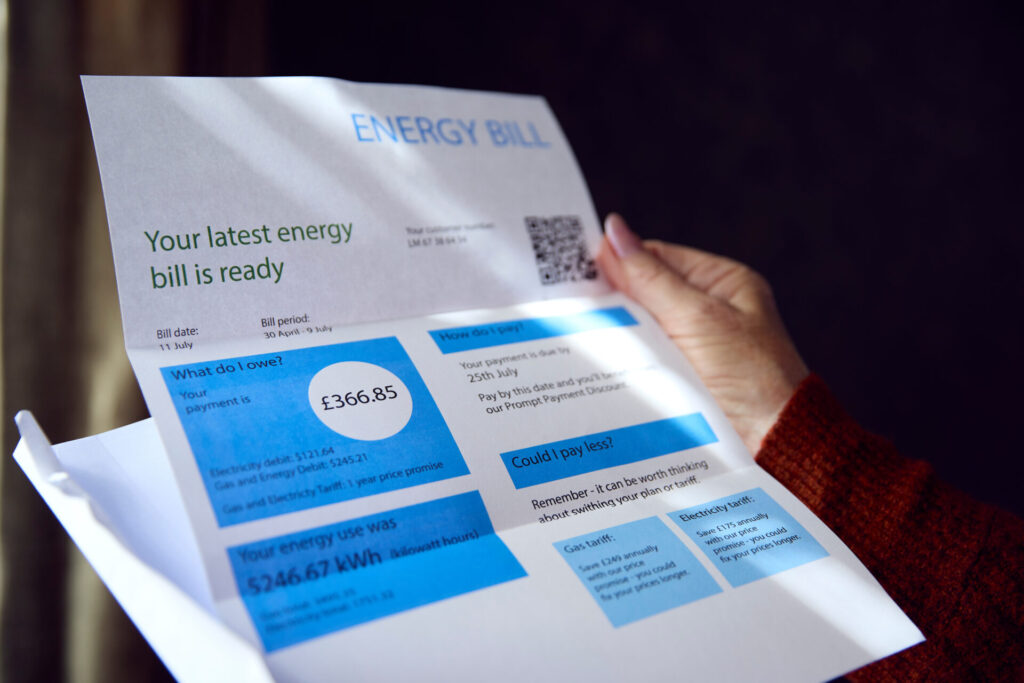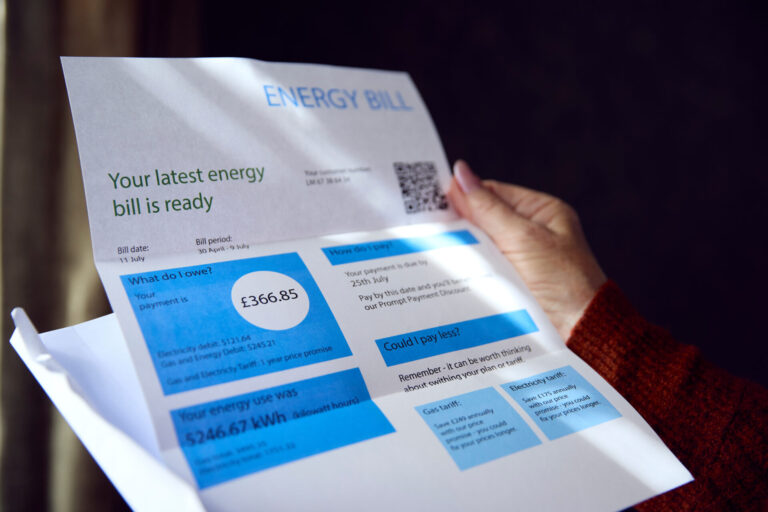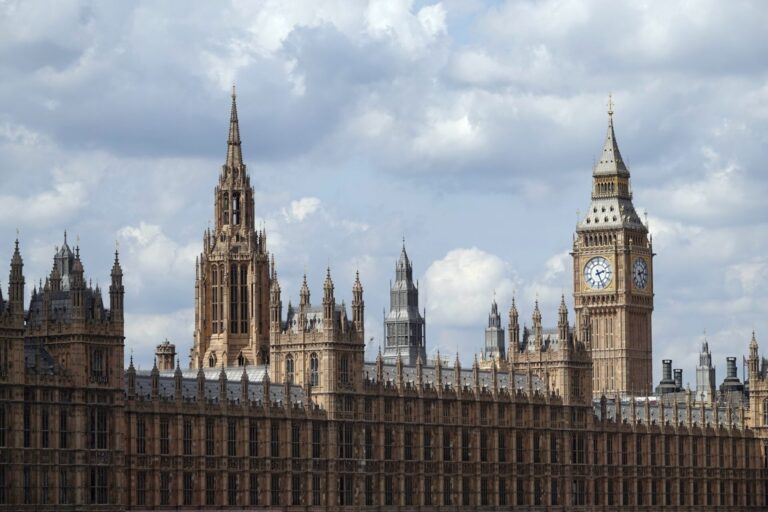As energy prices continue to dominate headlines, the debate around Ofgem’s standing charges has reignited fierce discussion within the industry....
Read More- Industry Updates
How Ofgem’s Standing Charge Review Could Impact UK Energy Users
-
 Hilly Hannam-Seymour
Hilly Hannam-Seymour
- 4 minute read
Discover More
As energy prices continue to dominate headlines, the debate around Ofgem’s standing charges has reignited fierce discussion within the industry. These fixed daily fees — applied to all customers regardless of how much energy they use — have long been criticised for unfairly burdening low-consumption and low-income customers. Now, with Ofgem proposing a review and potential overhaul of how standing charges are structured, energy leaders are warning that what seems like a fairer system could end up doing more harm than good.
What Are Standing Charges and Why Do They Matter?
Standing charges are the fixed daily fees paid to maintain a connection to the energy network — whether for electricity, gas, or both. They cover essential costs such as infrastructure maintenance, metering, and supplier operations. Every business and household pays them, regardless of how much energy they consume.
For households, this can feel unfair when energy use is minimal. But for businesses, standing charges can represent a significant portion of their overall energy costs — especially for companies operating across multiple sites or with varying levels of activity. Even when operations slow or buildings are closed, these fixed charges continue to apply, meaning costs don’t necessarily reflect real-time energy use.
While the principle of standing charges is to ensure stable funding for the grid, critics argue that it discourages energy efficiency and penalises those who have already invested in greener technologies, such as solar panels or energy-saving equipment. Those that have taken steps to reduce consumption can still face high costs simply to stay connected to the network.

Ofgem’s Proposed Reform
In response to mounting public and political pressure, Ofgem has launched a consultation exploring ways to reform or even remove standing charges. One of the key ideas is to introduce “zero standing charge” tariffs, where consumers would pay only for the energy they use.
This would shift more of the cost burden into unit rates — meaning businesses and households would see higher per-kilowatt-hour prices but no daily fixed fee. On paper, this offers more flexibility and control, enabling low-usage customers to save more.
However, energy suppliers and industry figures have warned that this shift could backfire. Many worry that by removing standing charges it would not reduce the underlying costs of maintaining the network — those costs would simply be redistributed. High-usage customers, including manufacturers, hospitality venues, and large office sites, could face significantly higher bills.
The Risks of Restructuring
While Ofgem’s proposed changes are driven by fairness, they risk creating new inequalities and challenges.
For businesses, the biggest concern is unpredictability. A shift to higher unit rates could make energy budgeting far more complex, especially for organisations with fluctuating operational demands or seasonal peaks. Companies that rely on energy-intensive processes would likely see higher overall bills, undermining competitiveness and complicating long-term planning.
For suppliers, the reform could introduce operational and communication risks. Explaining new tariff structures to both corporate and domestic customers will require clarity and consistency, particularly when billing becomes more complex. Misunderstandings could lead to customer frustration, complaints, or reputational damage.
For the wider energy market, there’s the question of stability. Standing charges provide a reliable source of income that helps suppliers manage cash flow and cover fixed costs. Without them, energy companies could face greater financial volatility — especially in times of low consumption, such as during mild weather or economic downturns.
The Fairness Dilemma
At the heart of the debate lies a complex question — what does “fair” really mean when it comes to energy billing? A purely usage-based model may sound equitable, but it risks undermining the financial stability of the grid. Conversely, a flat-rate standing charge ensures predictable income for suppliers but can feel regressive for low users.
This tension reflects the broader challenge facing the UK energy sector: balancing fairness, transparency, and sustainability while funding the transition to net zero. Ofgem’s review is therefore not just a billing exercise; it’s part of a wider rethink of how the UK allocates the costs of maintaining and decarbonising its energy system.
What Businesses Should Be Doing Now
As Ofgem’s review progresses, businesses can take proactive steps to prepare:
-
Analyse your energy profile
Identify how much of your energy bill comes from fixed versus variable charges. Companies with low or fluctuating usage should model how different tariff structures could impact total spend.
-
Engage with your supplier or consultant
Businesses should seek transparency from energy providers on how potential reforms could affect contract terms and pricing.
-
Invest in efficiency and flexibility
Smart meters, energy monitoring tools, and flexible procurement contracts can help businesses manage consumption more precisely and respond to market changes.
-
Work with consultants
Partnering with energy specialists can help businesses model potential scenarios, assess risk exposure, and optimise strategies ahead of regulatory change.
Preparing for a Broader Shift
The conversation around standing charges is part of a much wider transformation of the UK’s energy system. As we move toward decarbonisation, the way costs are distributed between fixed infrastructure, policy levies, and usage will continue to evolve. Businesses that take a proactive approach now — assessing where and how they can adapt — will be better positioned to navigate this transition smoothly.
Energy billing reform is not just about who pays what; it’s about building a system that is fair, sustainable, and fit for the future. Ofgem’s standing charge review offers an opportunity to rethink how we balance these competing priorities. For businesses, it’s a reminder that energy strategy must go beyond price comparison — it must consider structure, risk, and long-term stability.
A Delicate Balancing Act
Ofgem’s standing charge overhaul could redefine how both households and businesses pay for energy. While the goal of fairness is commendable, the path forward is far from simple. Removing standing charges might benefit some users but could raise costs for others, particularly energy-intensive or high-demand sectors.
By understanding the potential impacts early, modelling different tariff outcomes, and developing flexible strategies, businesses can turn regulatory uncertainty into an opportunity to build resilience and strengthen their energy management approach.
Facebook
LinkedIn




